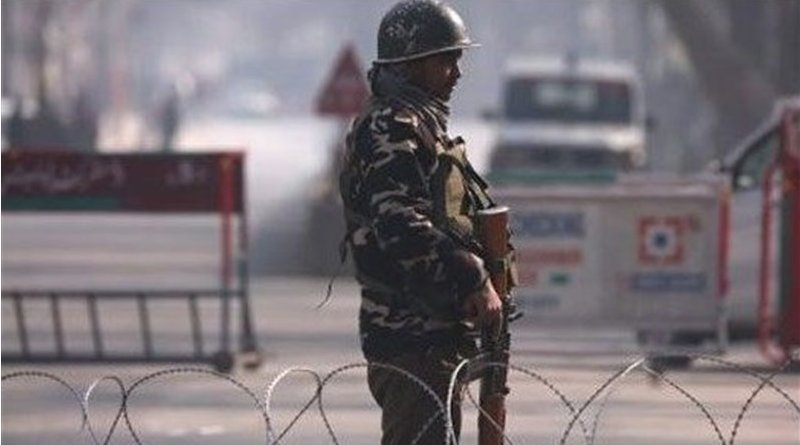Lessons And Warnings: Sanjiote Ambush – OpEd
Five soldiers were killed and another was critically injured in a carefully-scripted ambush by terrorists who targeted an Army vehicle on 20 April, near Sanjiote village in Poonch district of Jammu and Kashmir.
In October 2021, four soldiers including a Junior Commissioned Officer, were killed in the same general area in Mendhar tehsil by two suspected foreign terrorists, five days after the same group of terrorists had gunned down five Army soldiers in Chamrer forests of Poonch. In August last year, a suicide attack in Darhal area of adjoining Rajouri district, resulted in the killing of five Army soldiers while two terrorists involved in the attack were also gunned down later.
On January 1 this year, unidentified terrorists carried out a brutal attack in Dhangri village of Rajouri in which seven civilians, including two minors, were killed. For past 18 months, the Rajouri – Poonch sector of Jammu region has experienced an uptick in terror related violence, sufficient in numbers to reveal a discernible pattern.
In an endeavour to understand the pattern and to bring to fore certain lessons and warnings that need to be heeded to, few facets are flagged.
Firstly, the Rajouri-Poonch sector is located on the south of Pir Panjal ranges, outside the Kashmir Valley. The area has been a traditional gateway for infiltrators to enter the Kashmir Valley, after infiltrating the Line of Control. However in an effort to demonstrate their expanding hold as also to diversify, tanzeems have often established base and operated with impunity, in this sector. Late 90s and early years of this century were marked with terror incidents when the outfits went beyond fleeting and chance engagements with security forces and graduated to tactical operations like ambush, fidayeen and stand-off attacks on security personnel and posts etc. These were the times when Rajouri-Poonch sector witnessed the worst of times vis-a-vis the security situation and operation Sarp-Vinash by the security forces.
The years of relative calm from 2005-06 have been disturbed by the incidents cited above. These incidents were all initiated by terrorists and executed with deliberate planning, pointing to their efforts to regain foothold in the region. This is a matter of grave concern, especially in the altered dynamics of today.
Secondly, it was reported in the media that the ill-fated army truck that got charred in the ambush, was carrying fruits and materials to the company location at Sanjiote, for the Iftar to be hosted for locals. Units deployed in insurgency scenarios always strive to establish and sustain amicable chord with the locals and execute such activities to win their hearts and minds. It is also true that the kind of planned ambush that the terrorists executed and the very fact that they are still at large, could not have materialised without the local support. Notwithstanding the paradox, the units need not get disenchanted with the local population. On the contrary, such a contradiction should kindle an introspection by units to make fraternisation with locals, more vigorous and effective.
Thirdly, in the context of recent talks of Army withdrawal from Jammu and Kashmir, the steps need to be deliberated upon and shifting of responsibility from the Army has to be nuanced and seamless. In fact, the post Galwan readjustments of counter-insurgency grid to make troops available for the Line of Actual Control may have adversely affected the prevalent counter-insurgency grid, thereby emboldening that the terrorists.
And last but not the least, it is all about the leadership at the cutting edge levels. Over past fifteen years or so, insurgency related indices have relatively declined, especially in Rajouri-Poonch sector. As a result of protracted deployments and not much happening, operationally, the troops tend to get complacent, resulting in lowering of guard. Since the initiative lies with the terrorists, unless fully alert, troops suffer casualty during a terror strike.
It is noted that troops cannot be faulted in this context since maintaining highest levels of alertness all the time is humanly not possible. In this regard, effective and real time intelligence at the ground level is utmost crucial. The plethora of intelligence agencies belonging to varied domains like – civil and military, centre and state etc operate in sub-sectors and will have to be made more accountable. Also, it is on the genius of unit leadership to keep the soldiers motivated and interested at all times so as to obviate chances of getting surprised and incur irreparable losses. The crucial connect of the leaders and the led is of utmost relevance; in fact going a notch above, counter-insurgency deployments require a soldier who can apply and adapt to dynamics and leadership should strive to make leaders out of the followers.
Colonel Shashank Ranjan is a retired Infantry officer with rich experience of serving in insurgencies. He is currently an Adjunct Fellow with OP Jindal Global University and a PhD scholar. Views expressed by the author are personal.


A permanent and just remedy need to be adopted. Deployment of forces can not be continue for 75 years or beyond. The game of spilling blood can not be continue indefinitely. Indian government should consider on this point.
Get the mathematics & facts correct. Blood spilled in 1947-48 was due to the attacks by Pakistani raiders. Then followed the good time when tourism happened and bollywood shot movies. 1987 onwards, only Kashmiri Hindu blood was spilled by selfish, Pakistani trained JKLF and other terrorist organisations. After that security forces spilled blood of the terrorists and antinationals.